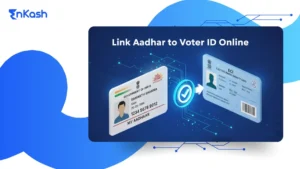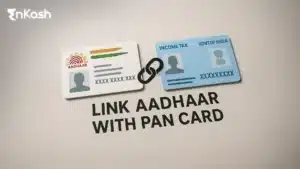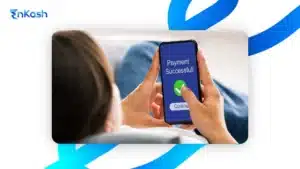The Rise of DIY Prepaid Cards
The way people and businesses manage money is changing quickly. Cash reimbursements, loose receipts, and uncontrolled spending are giving way to smarter payment tools. Among these tools, the DIY card is gaining attention. It gives flexibility and control without the need for complex banking systems.
At its core, a DIY card is a prepaid solution that can be shaped to match a specific need. Companies can issue cards to employees for work expenses. Individuals can use them as a safe option for digital payments. Unlike regular prepaid cards from banks, these cards allow the issuer to decide on design, usage rules, and limits.
This growing interest comes from several factors. Businesses want better visibility over spending. Digital adoption has increased in every sector. Regulations have also made prepaid instruments reliable and secure. Together, these shifts are creating space for solutions that give both structure and freedom.
This guide takes you through everything about DIY prepaid cards. You will understand what they are, how they work, the features that make them unique, and the benefits they bring. We will also look at challenges, compliance rules, and the process of creating your own prepaid card program. By the end, you will have a clear picture of how these cards are reshaping payments.
What Is a DIY Card? DIY Full Form and Concept
The DIY full form is Do It Yourself. In the world of payments, it refers to the ability to create and manage your own prepaid card program. A DIY prepaid card is not issued as a standard product from a bank. Instead, it is designed in partnership with licensed issuers and payment networks, giving the user greater control.
A DIY card is always a prepaid instrument. Money is loaded on the card before use, which means there is no credit or debt involved. The difference lies in customization. The issuer can decide how the card looks, where it can be used, and how much it can be spent. Rules can be set for daily limits, merchant categories, or even single-use transactions.
This level of flexibility makes DIY cards different from regular prepaid options. A normal prepaid card works within fixed conditions set by the bank. A customizable prepaid card, on the other hand, adapts to the needs of the business or individual managing it.
Think of it as building blocks. The framework is provided by licensed institutions. On top of that, the user shapes the program with features, limits, and branding that matter to them. This is why DIY cards are often described as prepaid solutions with freedom of choice built in.
Market Drivers and Emerging Trends
The demand for prepaid cards has been climbing, and DIY solutions are part of that rise. Businesses and individuals are looking for tools that provide control and clarity in spending. A customizable prepaid card offers both. To understand why adoption is rising, it helps to look at the forces that are shaping the market.
- Shift from cash to digital payments
More people prefer digital transactions for safety and transparency. The move away from cash has opened the door for flexible card-based solutions that are easy to track. - Need for better expense management
Companies want to move past manual reimbursement systems. A reloadable, customizable card lets managers set limits, track transactions in real time, and reduce paperwork. - Growth of online commerce and subscriptions
With digital services and recurring payments increasing, virtual prepaid cards are becoming useful for safe online transactions and quick replacements. - Regulatory backing for prepaid instruments
Payment authorities have encouraged prepaid adoption through clear rules and compliance guidelines, making these cards more trustworthy. - Data-driven decision-making
Businesses value insights from transactions. A customized prepaid card solution can offer analytics that guide budgets, spot unusual spending, and improve efficiency. - Preference for flexibility and control
Traditional cards work within fixed structures. A DIY card allows the issuer to decide how the card is used, giving a balance between structure and freedom.
How DIY Prepaid Cards Work
The idea of creating your own card might sound complex at first. In practice, it is about combining different parts of the payment system into one program. Each part plays a role, and together they make the DIY prepaid card function smoothly.
- Issuing partner
Every program begins with a licensed bank or financial institution. They provide the authorization needed for the card to exist within the payment network. - Payment network
The card is connected to a network such as RuPay, Visa, or Mastercard. This allows transactions to be accepted at merchants across regions, depending on the type of card. - Processor and program manager
These partners handle the technical side. They process transactions, maintain the system, and help in setting rules for how the customizable prepaid card can be used. - KYC and onboarding
Before cards can be issued, users go through verification. Full KYC allows higher load limits, while minimum KYC sets caps on how much can be stored. - Loading funds
The card works on a prepaid model. Money is added before use. For reloadable cards, customizable cards, balances can be topped up again and again. - Transaction flow
When the card is swiped or used online, the payment request moves through the network, the processor checks the rules, and funds are settled instantly. - Reporting and analytics
All activity is logged in real time. Dashboards show where and how the card is being used, helping businesses or individuals make quick decisions. - Physical vs virtual prepaid cards
Physical cards work at stores and ATMs. Virtual prepaid cards are issued digitally and are better suited for online transactions, trials, and one-time purchases.
Through these steps, a DIY prepaid card gives control from start to finish. The structure is handled by partners, but the choices belong to the issuer.
Types of Customizable Prepaid Cards
Prepaid cards are not all the same. A customizable prepaid card can be designed in different forms depending on how it will be used. Each type has its own structure and rules. Knowing the options helps in choosing the right one.
- Reloadable customizable cards
These cards allow money to be added again and again. They are useful when regular spending is expected. Once the balance runs out, it can be topped up, making the card last for a long period of time. - Non-reloadable cards
A set amount is loaded on these cards at the start. After the balance is used, the card cannot be reloaded. These are often chosen for one-time payouts or short-term programs. - Open-loop cards
These cards are linked to major payment networks. They can be used at a wide range of merchants and even for online payments. Their reach makes them more flexible than closed or semi-closed types. - Semi-closed cards
These cards are accepted at selected outlets or platforms. They provide some freedom while still limiting where money can be spent. - Physical prepaid cards
A physical card looks like a regular debit card and can be used at stores, fuel stations, and ATMs. For some users, holding a physical card gives a sense of ease and familiarity. - Virtual prepaid cards
These are issued digitally and shared instantly. They are useful for online payments, trial services, or one-time transactions. The lack of a physical form makes them quick to issue and easy to control. - Single-use cards
These cards are created for a single transaction. After payment is made, they expire. They reduce the risk of fraud and are helpful in situations where security is important. - Multi-use cards
These cards remain active for multiple transactions until the balance is used or until they are blocked. They are more convenient when ongoing spending is expected.
Each type of DIY prepaid card has its purpose. The choice depends on the balance between control, flexibility, and the goals of the issuer.
Features and Benefits of Customizable Prepaid Cards
A customizable prepaid card stands out because it gives both control and flexibility. The features are designed to make payments safer, simpler, and more transparent. Each feature also brings clear benefits, which is why these cards are becoming a preferred choice for many.
- Personalized design and branding
The card can carry a logo, a chosen color scheme, or even custom packaging. This makes the card feel unique and helps build stronger connections with users. For businesses, it also adds a touch of identity every time the card is used.
- Reloadable customizable cards
Money can be added again and again, which makes the card long lasting. This is useful when spending is ongoing, such as for regular allowances or repeated transactions. The benefit is that there is no need to issue a new card every time funds are required. - Spending controls and limits
Rules can be set for how the card is used. Daily caps, merchant restrictions, and time-based limits can be applied. These controls reduce misuse and make sure money is spent in line with the intended purpose.
- Security features
A card can be frozen instantly if it is lost or stolen. Tokenization hides sensitive details, and alerts can be set for every transaction. These measures help reduce fraud and give confidence to both issuers and users.
- Virtual prepaid cards
Cards can be issued in digital form within minutes. They are ideal for online purchases and single-use payments. The main benefit is speed and security, since they can be generated and canceled quickly.
- Integration with systems
A customized prepaid card solution can be linked with accounting tools or expense management platforms. This reduces paperwork and ensures spending data is automatically recorded. It saves time and makes audits smoother.
- Analytics and reporting
Every transaction is captured in real time. Dashboards highlight spending patterns, unusual activity, and budget performance. These insights help in making better financial decisions.
- Flexibility in usage
Cards can be tailored for different purposes. Some may be meant for employee expenses, others for customer rewards. The benefit lies in being able to design a program that fits the exact need rather than adjusting to a fixed structure.
- Easy issuance and management
Cards can be distributed quickly, and balances can be managed centrally. This makes them practical for both small and large groups. The ease of management cuts down delays and improves efficiency.
Together, these features and benefits make the DIY card a tool that adapts to the needs of its user. It is not just about payments but about creating a controlled system that brings clarity, safety, and convenience.
Challenges and Limitations of DIY Prepaid Cards
A DIY prepaid card brings flexibility, but there are also challenges that need attention. Knowing these limitations helps in planning better and avoiding surprises.
- Regulatory compliance
Every prepaid card program must follow strict rules. KYC checks, spending limits, and reporting standards are mandatory. Missing these can cause penalties or even suspension of the card program. - Initial setup cost
Creating a customizable prepaid card program requires an investment. There are fees for design, technology, and integration. For smaller groups, this setup can feel heavy before the long-term benefits are seen. - Dependence on partners
A DIY card cannot run fully on its own. It needs an issuing bank, a processor, and network partners. Any issue with these partners can affect how the card works. - Security risks
Even with protections, there is always a chance of fraud or misuse. If systems are not monitored carefully, fake transactions or identity theft can cause losses. - User training and adoption
Not everyone finds it easy to shift from cash or traditional methods. Users may need guidance on how to use features such as virtual cards, reporting dashboards, or reload options. Without proper training, adoption may stay low. - Operational complexity
Managing multiple card types, rules, and policies can become complex. As the program grows, oversight must also grow, or mistakes in fund allocation and tracking may occur.
These challenges do not make the customizable prepaid card less useful, but they highlight the need for careful planning. A strong program balances flexibility with compliance, security, and support.
How to Create Your Own Prepaid Card: Step-by-Step
Setting up a DIY prepaid card program may sound technical, but with the right steps, it becomes clear and manageable. The process combines planning, design, and partnerships. Here is a simple roadmap.
- Define the purpose
Start by deciding why the card is needed. It could be for employee expenses, customer rewards, or safe online payments. A clear goal helps in shaping the card’s design and rules.
- Choose an issuing partner
Every DIY card must be linked to a licensed bank or financial institution. This partner provides the approval needed for the card to operate in the payment system.
- Select the payment network
Decide if the card will work on a wide network such as Visa, Mastercard, or RuPay. The choice affects where the card can be used and how widely it will be accepted.
- Design the card
This is where customization begins. The customizable prepaid card can carry a logo, chosen colors, or even a digital-only format. Virtual options are quicker to issue, while physical cards give users a familiar touch.
- Integrate KYC checks
Build in the right level of verification. Minimum KYC allows limited use, while full KYC opens higher balances and fewer restrictions. This step ensures compliance and protects against fraud.
- Set spending rules
Decide the limits. Daily caps, merchant restrictions, and category-based controls can be applied. These rules make the card safer and align spending with the purpose defined earlier.
- Pilot the program
Before launching widely, test with a small group. This helps to catch issues, adjust policies, and train users. A pilot builds confidence in the system.
- Roll out at scale
Once tested, the program can be expanded. Reloads, reporting, and support should all be ready to handle larger numbers of cards.
- Track and improve
Use reporting tools to study spending patterns and user behavior. Data insights highlight what is working and what needs change.
By following these steps, a customized prepaid card solution can be created without heavy complexity. The program grows as the needs grow, making it both practical and adaptable.
Final Thoughts
A DIY card represents the shift from rigid payment methods to flexible, purpose-driven solutions. It allows complete control over design, limits, and usage, while still running on a secure and compliant framework. The power lies in choice. A business can decide how expenses are managed, and an individual can shape the card to match personal goals. With options like reloadable, customizable cards and virtual prepaid cards, these solutions bring clarity, safety, and efficiency to everyday spending. As digital payments continue to expand, DIY prepaid cards are set to play a central role in the future of financial management.
FAQs
1. What makes a DIY prepaid card different from a regular prepaid card?
A regular prepaid card follows a fixed structure created by the bank. A DIY prepaid card allows the issuer to decide on design, rules, and spending controls. This flexibility creates a card that matches specific goals rather than a one-size-fits-all approach.
2. Can a DIY card be issued without a physical version?
Yes. A virtual prepaid card can be created without printing a physical card. It is shared digitally and can be used for online payments, subscriptions, and trial services. This makes issuance faster, reduces costs, and increases security against card theft.
3. Are DIY cards suitable for personal use or only for organizations?
DIY cards are often used by organizations, but individuals can also benefit. A person may choose a customizable prepaid card for budgeting, travel spending, or online purchases. The key advantage is that the card can be tailored to fit personal or business needs.
4. How do reloadable customizable cards improve control over money?
A reloadable customizable card allows funds to be topped up whenever needed. This ensures continuity and avoids the need for multiple new cards. The ability to reload while keeping strict spending rules gives both flexibility and strong control over money.
5. What role does KYC play in creating a DIY prepaid card?
KYC, or Know Your Customer verification, is a compliance step that links the card to a verified identity. Full KYC unlocks higher balances and fewer restrictions. Without it, limits remain low. This protects against fraud and ensures the card is used safely.
6. Can DIY cards be linked to accounting or budgeting systems?
Yes. A customized prepaid card solution can integrate with accounting tools or budgeting platforms. This makes expense reporting automatic, reduces manual errors, and gives real-time visibility into spending. Integration is one of the features that makes DIY cards practical for organizations.
7. What security features make DIY prepaid cards reliable?
Security features include tokenization of sensitive data, real-time transaction alerts, instant freeze or unfreeze options, and spending caps. Together, these make the DIY card a safe payment tool that reduces risks of fraud and gives peace of mind to the user.
8. Can DIY prepaid cards be used internationally?
Yes, if the card is issued as an open-loop product connected to a global network such as Visa or Mastercard. These customizable prepaid cards work at international merchants. However, cross-border rules, currency conversion, and local compliance must still be followed.
9. What is the biggest challenge in running a DIY prepaid card program?
The main challenge is compliance with strict rules around verification, limits, and reporting. Issuers must ensure every step aligns with regulations. Another challenge is user adoption, since people may need training to shift from cash or traditional payment methods to DIY cards.
10. How quickly can a DIY prepaid card program be launched?
The timeline depends on planning, partnerships, and compliance approvals. A simple DIY card setup with virtual cards may be launched in weeks. More complex programs with physical cards, custom packaging, and integrations may take longer, but the result is a tailored solution.












